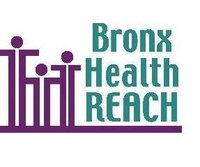CHMP Senior Fellow Charmaine Ruddock, MS directs Bronx Health REACH, a coalition of 50 community and faith-based organizations, funded by the Centers for Disease Control’s REACH 2010 Initiative to address racial and ethnic health disparities.

So now, the Bronx, in addition to having the designation as the poorest urban congressional district in the United States (approximately, 40% of residents live below the federal poverty level), has the additional, unfortunate, designation of being the hungriest neighborhood in the country.
Here is the irony; we also have one of the highest rates of obesity. For children – 1 out of 3 in the borough’s Head Start program is obese, and nearly 4 in 10 in public elementary schools are overweight or obese. For adults – 1 in 4 adults is obese, and 2 in 3 are overweight or obese.
The other irony is that the Hunts Point Terminal Produce Market, which is the second largest wholesale market in the world, supplying 60 percent of the city’s fresh produce, is located in the Bronx. But little of this gets to the hungriest Bronx residents, especially those in the South Bronx.
This seeming paradox of being the hungriest as well as the most overweight and obese actually reflects two sides of the same problem. Poor people with very limited resources also have access to the worst nutritional quality of food. What they can afford limits their food choices to those that are calorie dense but nutritionally poor. However, this represents a potential market for the cheap food industry, thus it should come as no surprise that there has been a large influx of fast food restaurants in the Bronx. And, if you read The Extraordinary Science of Addictive Junk Food in the New York Times Magazine you were made even further aware of the enormous odds that the poor and hungry face in trying to feed themselves and their families.